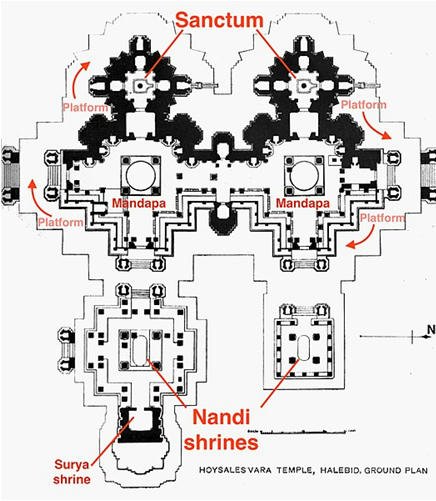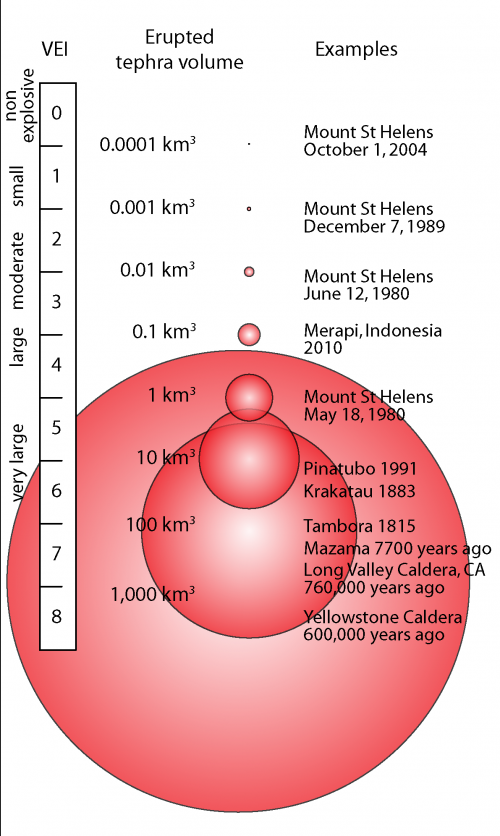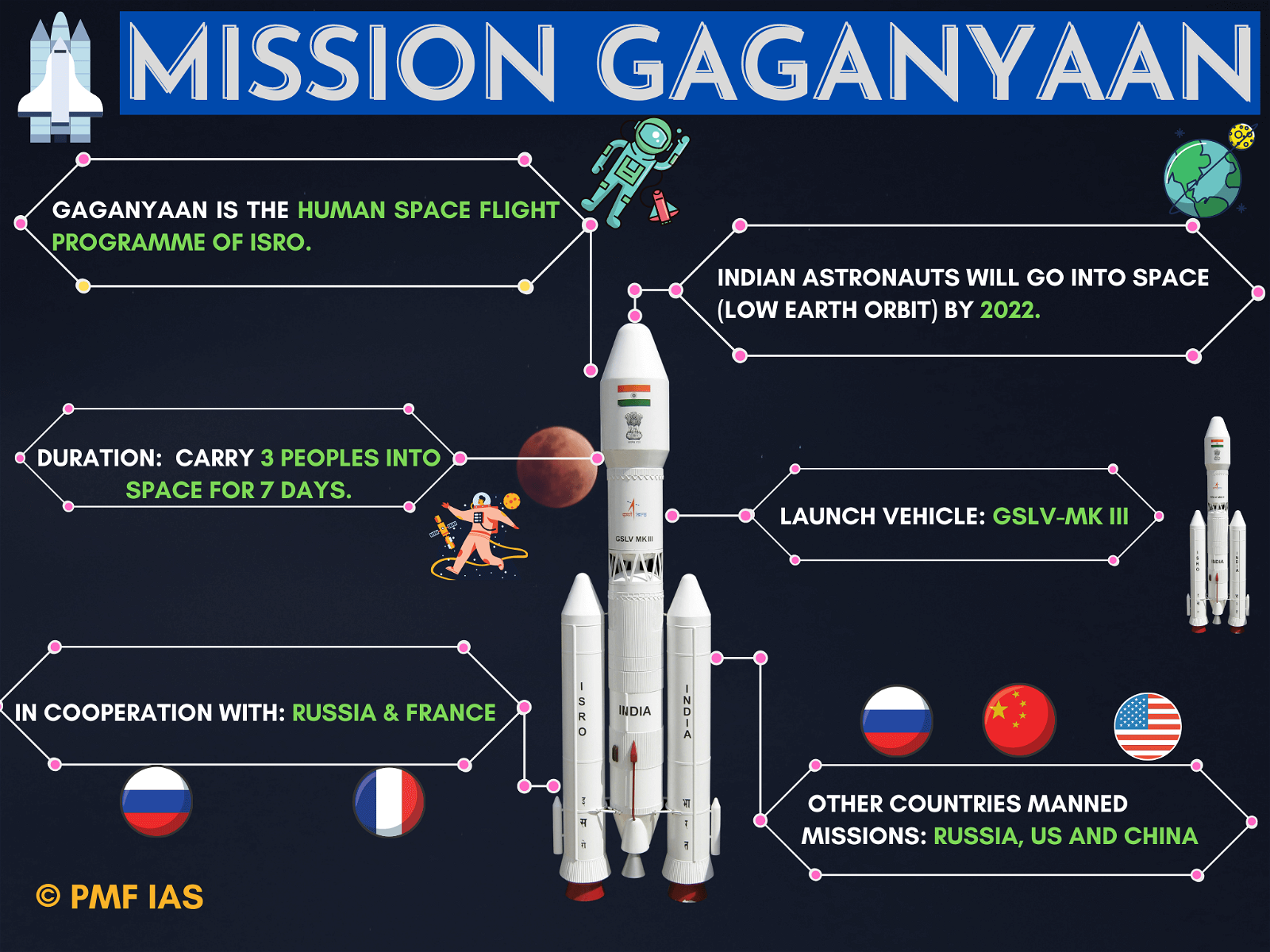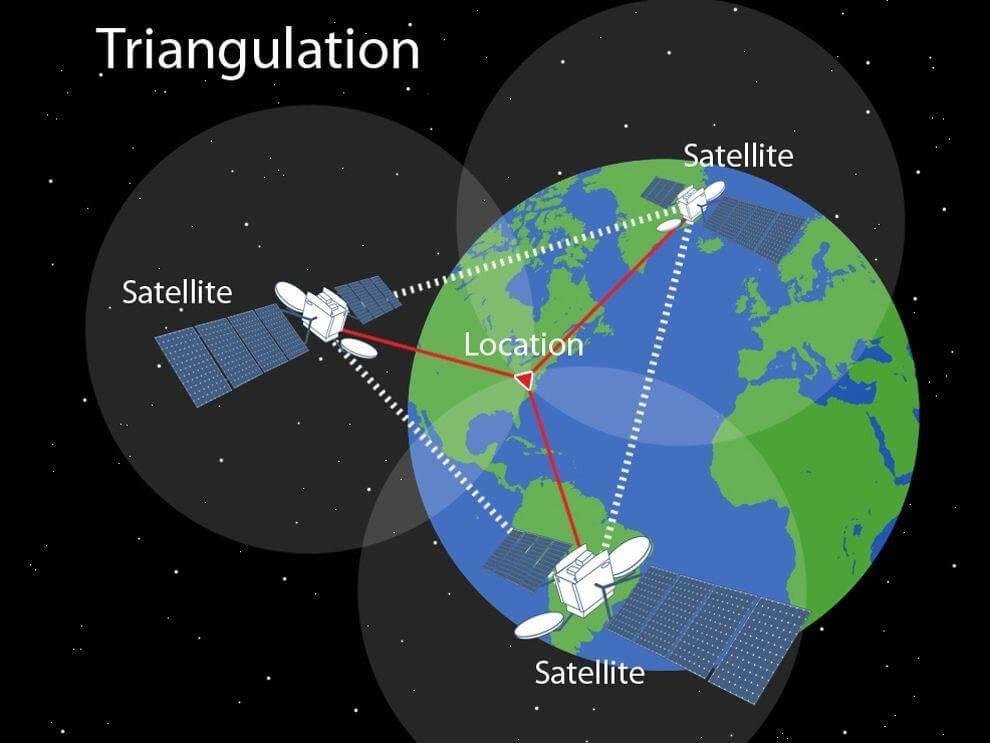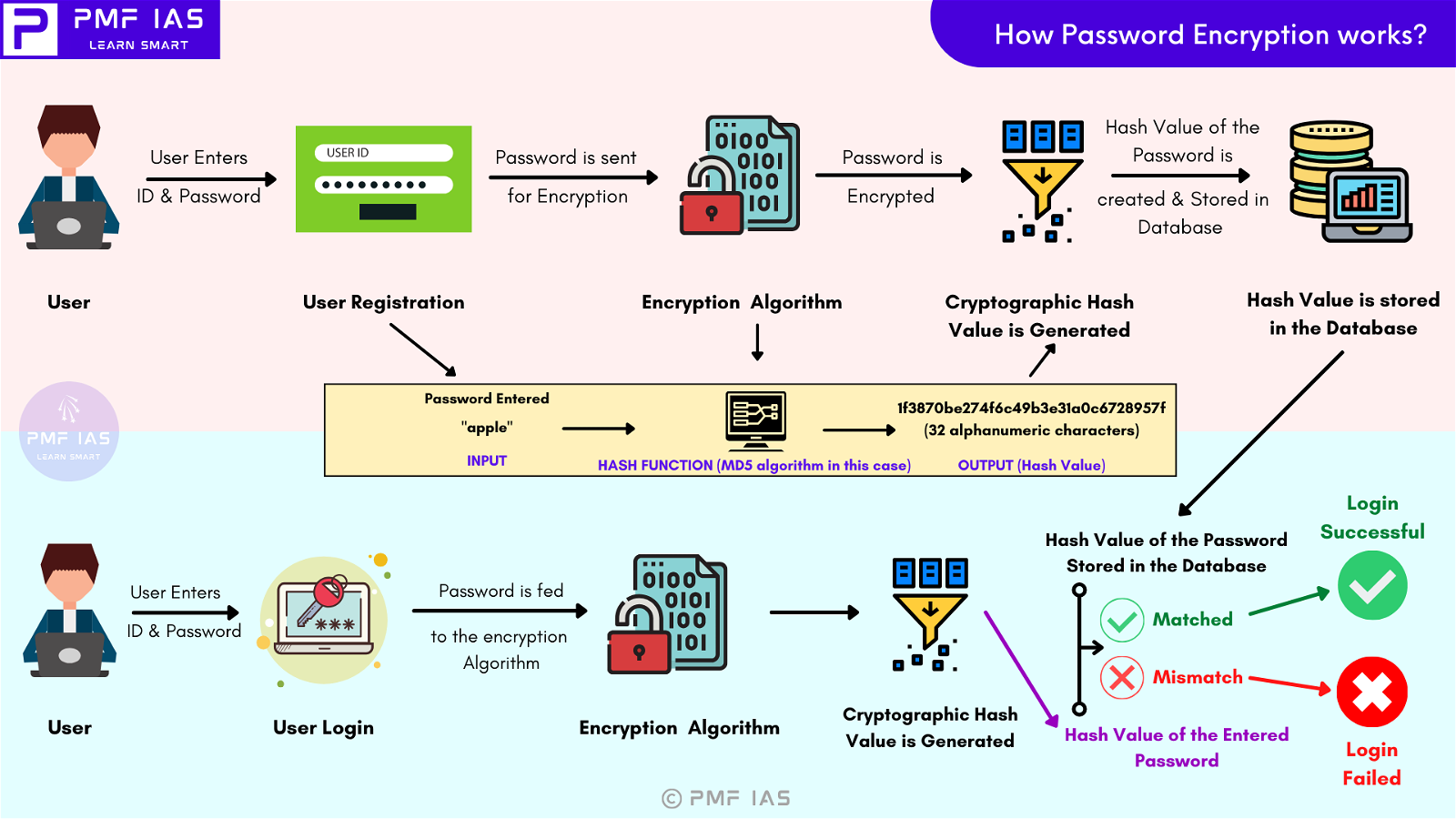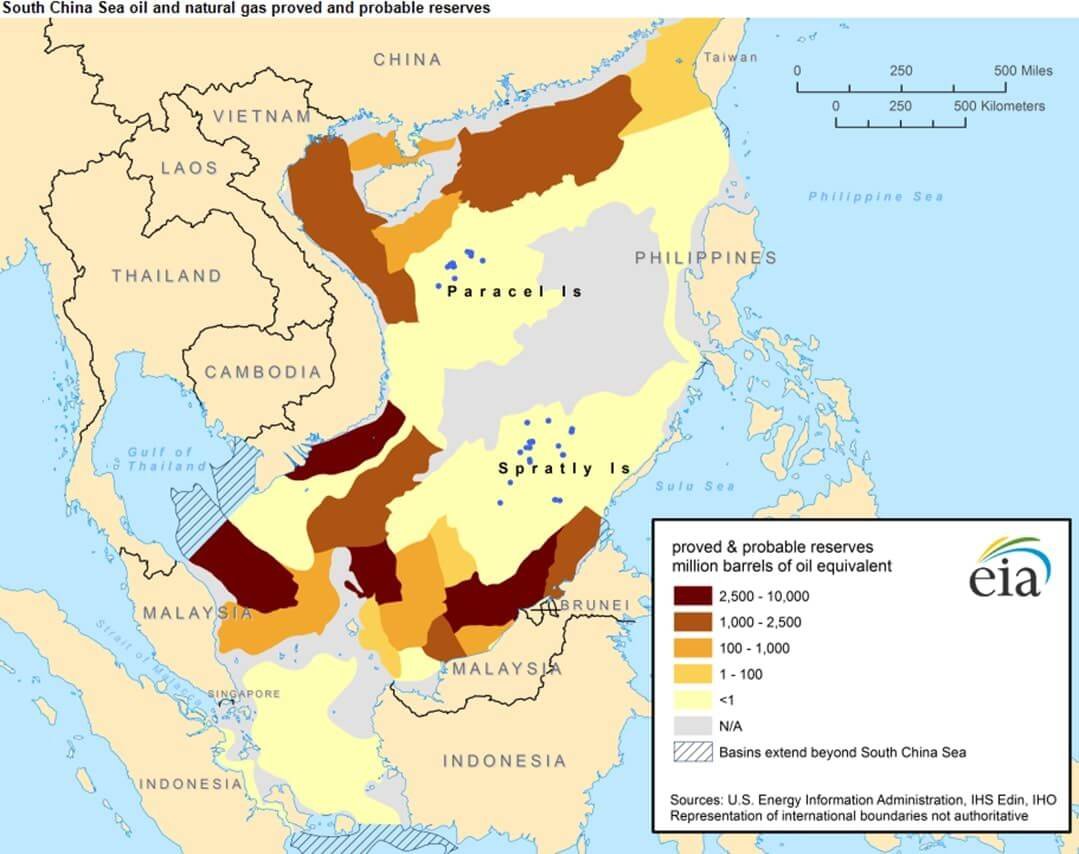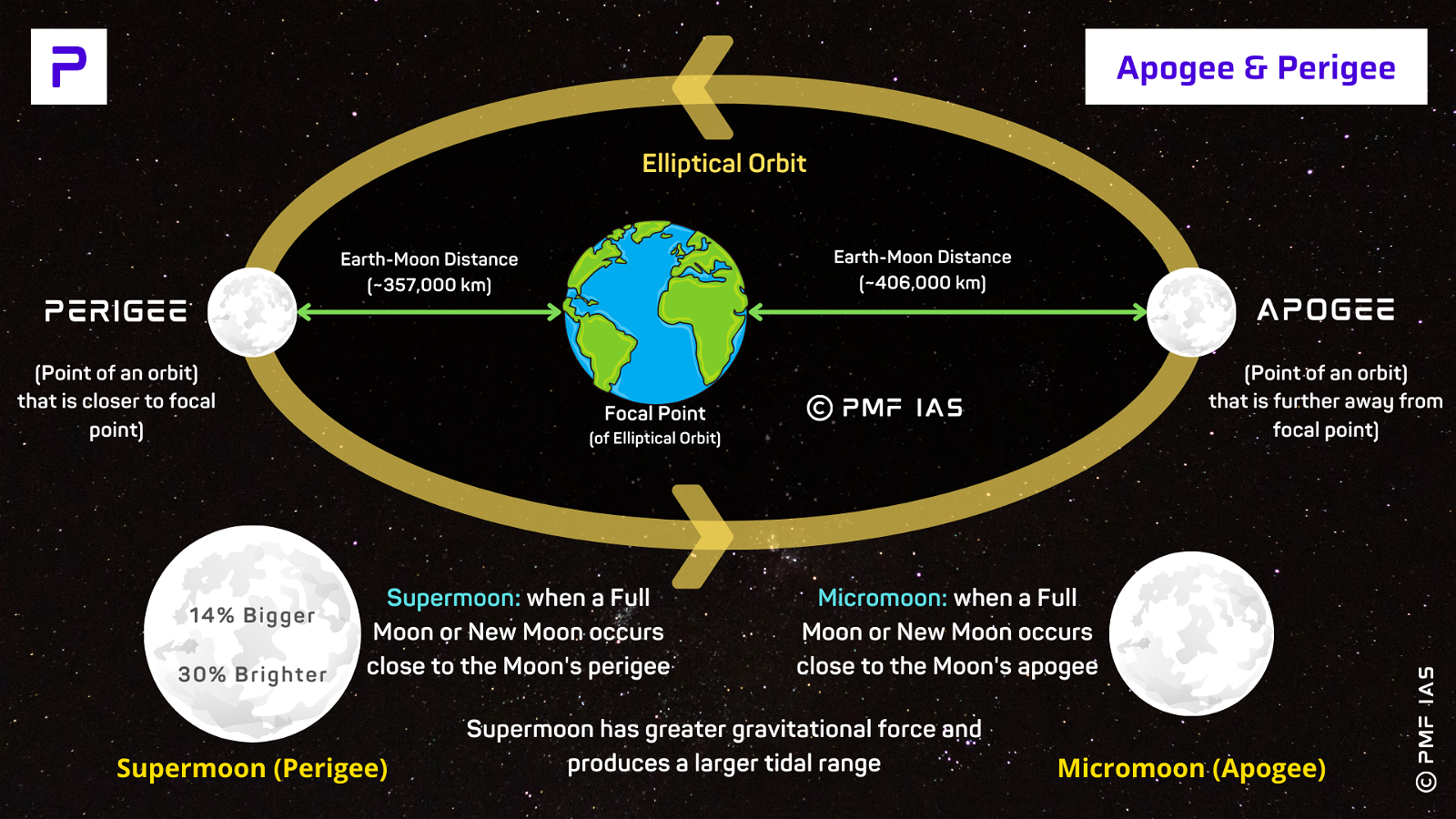
Current Affairs September 10-11, 2023: Konark Temple wheel, One Nation One Election, Tropical Forests Getting Too Hot for Photosynthesis
Subscribers of "Current Affairs" course can Download Daily Current Affairs in PDF/DOC
Subscribe to Never Miss an Important Update! Assured Discounts on New Products!
Must Join PMF IAS Telegram Channel & PMF IAS History Telegram Channel
{GS1 – A&C – Architecture – 2023/09/11} Konark Temple wheel
- Context (IE I HT): PM Modi welcomed G20 leaders at the summit venue, Bharat Mandapam, against the backdrop of a replica of the Konark Wheel from the Sun temple of Puri in Odisha.
Konark Sun Temple

- Konark Sun Temple is a 13th-century CE Sun temple located on the coastline in Puri, Odisha.
- The temple is attributed to King Narasimhadeva I of the Eastern Ganga dynasty and was completed around 1250 CE.
- The temple is designed as a 100-foot-high chariot with immense wheels & horses, carved from stone.
- The temple complex, which was once over 200 feet high, is now largely in ruins.
- It was declared a UNESCO World Heritage Site in 1984 and remains a major pilgrimage site for Hindus, who gather here every year for the Chandrabhaga Mela around the month of February.
- The Konark Sun Temple is depicted on the reverse side of the Indian currency note of 10 rupees.
- Konark temple was called the “Black Pagoda” in European sailor accounts as early as 1676 because it looked like a great tiered tower that appeared black.
- Similarly, the Jagannath Temple in Puri was called the “White Pagoda”.
- Both temples served as important landmarks for sailors in the Bay of Bengal.
Kalingan Temple Architecture
- The Kalinga Architectural Style is a style of Hindu architecture that flourished in the ancient Kalinga, previously known as Utkal and in present Odisha.
- The style consists of three distinct types of temples Rekha Deula, Pidha Deula, and Khakhara Deula.
- The Rekha Deula and Khakhara Deula houses are the sanctum sanctorum while the Pidha Deula constitutes outer dancing and offering halls.

Konark Temple Wheel
- Konark Temple was designed like the Sun God’s chariot, which was drawn by seven horses and had twenty-four exquisitely carved wheels.
- Each wheel is a masterpiece and is covered with intricate carvings.
- The Konark Wheel also depicts the continuum of life.
- The wheels are designed in such a way that one can gauge the time (Kalachakra) of the day by looking at the shadow cast on the spoke of the wheels by the sun.
- Not only that, the carvings of the spoke and axes denote the activities that one normally does at that time of the day.
- The wheel with 24 spokes, which has been adapted to the Indian National Flag, embodies India’s ancient wisdom, advanced civilization, and architectural excellence.
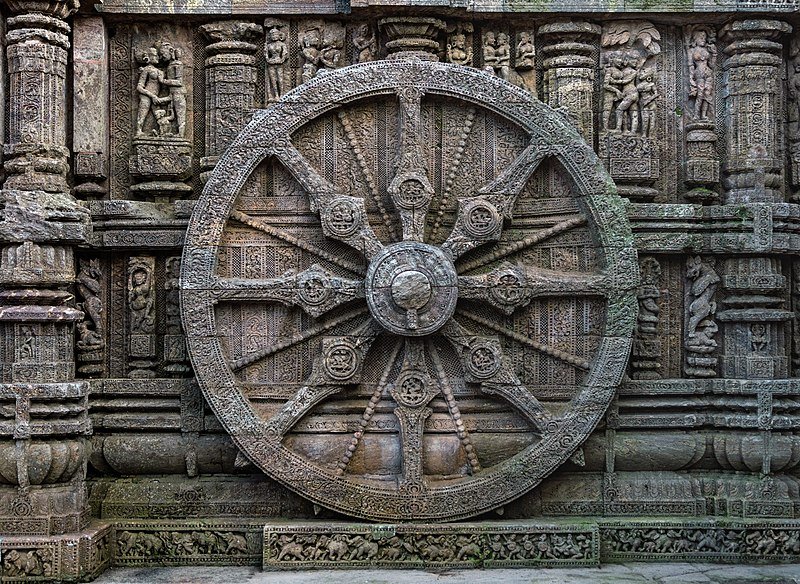
{GS2 – IR – Groupings – 2023/09/11} ASEAN
- Context (IE): PM Modi arrived in Indonesia to attend the 20th ASEAN-India summit and 18th East Asia summits.
- The ASEAN-India Summit is a diplomatic meeting between the member states of the Association of Southeast Asian Nations (ASEAN) and India.
- It is typically held as part of the ASEAN Summit meetings.
Association of Southeast Asian Nations (ASEAN)
- It is a regional group of ten countries that promotes economic, political, and security cooperation.
- India is not a member of ASEAN.
Evolution of ASEAN
- It was established in 1967 in Bangkok (Thailand) with the signing of the ASEAN Declaration (Bangkok Declaration).
- It has its secretariat in Jakarta, Indonesia.
- Indonesia, Malaysia, Philippines, Singapore, and Thailand are the founding members of ASEAN.
- It has ten member countries. Other members are Myanmar, Laos, Cambodia, Vietnam, and Brunei.

Leadership
- ASEAN’s leadership rotates annually based on the alphabetical order of the English names of the member states.
- A member state at the helm chairs the ASEAN summit.
- Myanmar was scheduled to take over the leadership in 2026.
- Recently, the ASEAN leaders have decided not to give the leadership of this bloc to Myanmar.
- The Philippines agreed to take over the regional bloc’s chairmanship in 2026.
|
ASEAN Summit
- It is the highest policy-making body in ASEAN comprising the Heads of State.
- As per regular practice, the ASEAN Summit is held twice annually.
- The first ASEAN Summit was held in Bali, Indonesia, on 23-24 February 1976.
Issues
- A policy of non-interference constrains ASEAN from acting strongly on important issues.
- It has not adequately isolated the military junta in Myanmar.
- It has not been able to provide a coordinated response to China’s territorial claims in the South China Sea.
ASEAN-India Summit 2023
- PM Modi presented a 12-point proposal to expand cooperation between India and the ASEAN at the annual ASEAN-India Summit 2023.
12-Point Proposal for Strengthening India-ASEAN Cooperation
- Establishing multi-modal connectivity and economic corridor that links South-East Asia-India-West Asia-Europe (resembles China’s Belt and Road Initiative).
- Invited ASEAN countries to join the Coalition for Disaster Resilient Infrastructure.
- Called for cooperation in disaster management.
- Invited ASEAN countries to join the Global Centre for Traditional Medicine being established by WHO in India.
- Called for working together on Mission LiFE.
- Offered to share India’s experience in providing affordable and quality medicines to people through Jan-Aushadhi Kendras.
- Called for collectively raising issues faced by Global South in multilateral fora.
- Called for a collective fight against terrorism, terror financing, and cyber-disinformation.
- Offered to share India’s Digital Public Infrastructure Stack with ASEAN partners.
- Announced ASEAN-India fund for Digital Future, focusing on digital transformation and financial connectivity cooperation.
- Announced renewal of support to the Economic and Research Institute of ASEAN and East Asia (ERIA) to act as a knowledge partner for enhancing our engagement.
- Called for enhanced maritime safety, security, and domain awareness.
India’s Connectivity Projects
|
Regional Comprehensive Economic Partnership (RCEP)
Conscience (Ethics)
|
Tough Stance by ASEAN Against the Junta in Myanmar
- The ASEAN has strongly condemned the violence and urged the armed forces to stop targeted attacks on civilians.
Five-Point Consensus
- In 2021, ASEAN and Myanmar’s junta reached a five-point consensus.
- It aimed at addressing the post-coup crisis in the country.
- Under this plan, the junta promised to stop the violence and start inclusive political dialogue.
- The junta has continued violating the consensus.
Five Points
|
East Asia Summit (EAS)
- It is the Indo-Pacific’s forum for strategic dialogue.
- It is the only leader-led forum at which all key Indo-Pacific partners meet to discuss political, security, and economic challenges.
- The first EAS was held in Kuala Lumpur in 2005.
- The EAS has 18 members:
- Ten ASEAN countries
- Eight other countries: China, India, Russia, United States, Australia, Japan, New Zealand, Republic of Korea (South Korea)
Act East Policy
- It was announced by PM Modi in 2014.
- It is a successor to the Look East policy.
- It focuses on the extended neighbourhood in the Asia-Pacific region.
- The objective is to promote economic cooperation and cultural ties and develop strategic relationships with countries in the Asia-Pacific region.
- It has emphasised India-ASEAN cooperation.
|
New Cold War
- Indonesia warned the US, China, and Russia against sharpening rivalries.
- Indonesia asked them to manage differences to avoid a “New Cold War“.
Reasons for Rising Rivalries
- Russia’s invasion of Ukraine
- Maritime challenges in the South and East China Seas
- North Korean missile programmes
- Taiwan‘s ties with other countries
{GS2 – IR – Groupings – 2023/09/11} Group of Twenty (G20)
- Context (TH): The 2023 G20 summit was held in New Delhi.
- Group of Twenty (G20) is the forum for international economic cooperation consisting of 19 countries, the EU, and the African Union.
Evolution of G20
- G20 was founded in 1999 after the Asian financial crisis.
- It was started as a forum for Finance Ministers and Central Bank Governors to discuss global economic and financial issues.
- It was upgraded to the level of Heads of States in the wake of the 2007 global financial crisis.
- In 2009, it was designated the “premier forum for international economic cooperation”.
- It initially focused on broad macroeconomic issues, but now expanded its agenda to include sustainable development, health, energy, environment, climate change, and anti-corruption.
G20 Members

G20 Presidency
- G20 Presidency is responsible for bringing together G20 agenda in consultation with other members.
- India holds the Presidency of the G20 from 1 December 2022 to 30 November 2023.
- As the G-20 presidency, India sets the agenda for the year, identifies the themes and focus areas, conducts discussions, and works out outcome documents.
Troika
- The Troika supports the Presidency. It consists of the previous, current, and upcoming presidency.
- During India’s Presidency, the Troika comprised of Indonesia, India, and Brazil.

G20 Sherpa
- Sherpas are special envoys of G20 leaders.
- They are representatives of member countries and are appointed directly by the Head of Government. Amitabh Kant is India’s 2023 G20 Sherpa.
How G20 Works
- G20 has no fixed headquarters or a permanent Secretariat. The secretariat moves by rotation between the countries hosting the Presidency of the grouping each year.
- The G20 Presidency leads the G20 agenda for one year and hosts the Summit.
- The G20 consists of two parallel tracks:
- Finance Track is led by Finance Ministers and Central Bank Governors of the member countries.
- Sherpa Track is led by the Sherpas of member countries.
- There are Working Groups in which representatives from the relevant ministries of the members, invited, and various international organisations participate.
- These working groups meet regularly throughout the term of each Presidency.
- There are Engagement Groups that bring together civil societies, parliamentarians, think tanks, women, youth, labour, businesses, and researchers of the G20 countries.
G20 Summit
- The G20 Summit is held annually under the leadership of a rotating Presidency.
- The first G20 Summit was held in 2008 in Washington, DC.
- The US is the only country that hosted the summit twice in 2008 and 2009.
2023 G20 Summit
- The 2023 G20 summit was India’s first G20 summit as a host country. PM Modi is the current G20 Chairman.
- India invited Bangladesh (India did not invite any other neighbour), Egypt, Mauritius, Netherlands, Nigeria, Oman, Singapore, Spain, and UAE as Guests for the 2023 G20 summit held in Kashmir.
Vasudhaiva Kutumbakam or “One Earth, One Family, One Future’
- It is the theme of India’s G20 Presidency.
- It is drawn from the ancient Sanskrit text of the Maha Upanishad.
- It affirms the value of all life — human, animal, plant, and microorganisms — and their interconnectedness on earth and in the broader universe.
Highlights of G20 Summit 2023
- The African Union becomes the permanent member of G-20.
- PM Modi launched the Global Biofuel Alliance.
- PM Modi launched the India-Middle East-Europe mega economic corridor.
- G20 leaders adopted the New Delhi Declaration.
African Union (AU)
- The AU is a continental body representing all African countries (55 member states).
- It was officially launched in 2002 as a successor to the Organisation of African Unity (1963-1999).
- Mali, Sudan, and Guinea were suspended in 2021, and Burkina Faso was suspended in 2022 after the military took power.
- The aims of the AU are:
- To achieve greater unity and solidarity between African countries and their people.
- To defend the sovereignty, territorial integrity, and independence of its Member States.
- To promote democratic principles and institutions, popular participation, and good governance.
- To promote peace, security, and stability on the continent.
- To accelerate the political and socio-economic integration of the continent.
Global Biofuel Alliance (GBA)
- It is an initiative by India as G20 Chair.
- A total of 19 countries and 12 international organizations have so far agreed to join the alliance.
- It includes both G20 members and non-member countries.
- Founding members include India, Singapore, Bangladesh, Italy, USA, Brazil, Argentina, Mauritius, and UAE.
- It aims to:
- Boost demand and technology transfer to produce biofuels and enhance trade.
- Foster global collaboration for the advancement and widespread adoption of biofuels.
|
Biofuel
First-generation biofuels
Second generation biofuels
Third generation biofuels
For more information on Biofuels > Biofuels, Important Biofuels, National Policy on Biofuels 2018 – PMF IAS |
India-Middle East-Europe Economic Corridor
- It is a network of transport corridors (railway lines and sea lanes).
- It consists of two separate corridors:
- East Corridor which connects India to West Asia.
- North Corridor that connects West Asia to Europe.
- It is part of the Partnership for Global Infrastructure Investment (PGII).
Partnership for Global Infrastructure and Investment (PGII)
- It is a joint initiative to fund infrastructure projects in developing countries.
- It was launched by G7 countries in 2022.
- It aims to counter China’s Belt and Road Initiative.
|

New Delhi Declaration
- On Ukraine war: All states must act in a manner consistent with the purposes and principles of the UN charter in its entirety.
- On food security: It called for immediate and unimpeded deliveries of grain, foodstuffs, and fertilizers from the Russian Federation and Ukraine.
- On climate change: Need to accelerate efforts to phase down unabated coal power, in line with national circumstances.
- Calls on parties to set an ambitious, transparent, and trackable New Collective Quantified Goal of climate finance in 2024, from a floor of $100 billion a year.
- Recall and reaffirm the commitment made in 2010 by the developed countries to the goal of mobilizing jointly $ 100 billion climate finance per year by 2020, and annually through 2025.
- Developed country contributors expect this goal to be met for the first time in 2023.
- Clean energy: It calls to encourage efforts to triple renewable energy capacity globally through existing targets and policies.
- It will work towards facilitating low-cost financing for developing countries to support their transition to low carbon.
- On global debt vulnerabilities: Commit to promoting resilient growth by urgently and effectively addressing debt vulnerabilities in developing countries.
- Call for swift conclusion of the debt treatment for Ethiopia.
Positive Impacts of India’s G-20 Presidency
- It raised India’s profile as a leader in the Indo-Pacific region.
- It has sowed the seeds of confidence in the countries of the so-called ‘Third World’ (countries that were not aligned with either the US or the Soviet Union).
- India’s G-20 Presidency made efforts:
- To address global energy and debt concerns.
- To promote a vision for a sustainable, inclusive, and equitable world.
- For the inclusion of the Global South (especially Africa in global affairs).
- India’s G-20 Presidency launched.
- Global Sovereign Debt Roundtable.
- Global Biofuel Alliance.
- India-Middle East-Europe mega economic corridor.
India’s Other International Initiatives
Global Sovereign Debt Roundtable
|
{GS2 – Polity – IC – Elections – 2023/09/01} One Nation One Election
- Context (TH): The Union government has constituted a committee headed by former president Ram Nath Kovind to explore the feasibility of “one nation, one election“.
- The idea of one nation, one election (ONOE) refers to holding simultaneous elections across the country. This means that:
- Elections for the Lok Sabha (LS) and all state assemblies across India will be held simultaneously.
- Voters will vote for LS and the state assemblies’ elections on a single day, simultaneously (or in a phased manner, as the case may be).
|
History of Simultaneous Elections in India
- Lok Sabha and state legislatures went to polls together in 1952 and 1957.
- The synchronised cycle was first broken in Kerala in July 1959, when the Centre imposed the President’s rule.
- At present, assembly elections in Andhra Pradesh, Odisha, Arunachal Pradesh, and Sikkim are held together with LS polls.
Idea of Simultaneous Elections
- The idea of simultaneous polls was mooted in the annual report of the Election Commission in 1983.
- The Law Commission’s Report of 1999 and 2018 also supported the simultaneous election.
Arguments in Favour of Simultaneous Elections
- Reduces enormous costs involved in separate elections.
- Boosts voter turnout as it will be more convenient for them to cast votes simultaneously.
- Helps ruling parties to focus on governance instead of being constantly in election mode.
- Increases efficiency in administration as administrative duties are affected by elections.
- Reduces the negative impact on governance due to the Model Code of Conduct.
|
Arguments Against Simultaneous Elections
- The ONOE concept contradicts India’s federal nature, as described in Article 1 of the IC.
- Against multi-tiered governance system: Elections for different levels allow voters to hold their representatives accountable for their specific grievances.
- It will:
- Centralise the power.
- Strengthen the hold of national parties when in office.
- Reduce the importance of regional parties.
|
- It will affect voter behaviour and benefit the dominant national party at the cost of regional players.
|
- Reduce the government’s accountability to the people as elections will occur once every five years. Repeated elections, on the other hand, keep legislators on their toes and increase accountability.
- Regional parties may not compete with national parties in terms of election expenditure and election strategy.
- Complications would arise:
- If any of the governments were to collapse before completing its term.
- If the Parliament dissolves before its five-year term.
|
- When an election in a State is postponed until the synchronised phase, the President’s rule must be imposed in the interim period. This will be a blow to democracy and federalism.
- If elections are to be held simultaneously, the state government cannot dissolve its assembly and call for fresh elections, which is against Political autonomy.
Faulty Logic
- Saving expenditure: There is no study to prove that there will be significant cost-saving with simultaneous elections.
- Continuous elections in India: When there are elections in a few States, ‘India’ is not in an election mode; some of India’s States are.
- Policy paralysis: An election in Assam with a model code of conduct does not stop projects or ‘development’ in Gujarat.
Need for Constitutional Amendment to Conduct Simultaneous Elections
- Simultaneous elections could not be held within the existing framework of the Constitution.
- It would require a constitutional amendment. Such a constitutional amendment would require ratification of at least 50% of the states.
- The Representation of the People Act and other parliamentary procedures must also be amended.
Amending the Constitution
Simple majority
Special majority
|
{GS3 – Envi – CC – 2023/09/11} Tropical Forests Getting Too Hot for Photosynthesis
- Context (TH | TG | NDTV ): A small percentage of leaves on trees in tropical forests is approaching the maximum temperature threshold for photosynthesis to work.
- The photosynthetic machinery in tropical trees begins to fail at about 46.7°C on average.
- If a global temperature increase of 3.9°C, these forests might experience mass leaf damage.
- The causes of temperature increase in tropical forests are:
- Global warming
- Local temperature changes due to deforestation and fragmentation
Photosynthesis (GS3, Biology)
Determinants of Photosynthesis
|
Implications of Photosynthetic Machinery Failure in Tropical Forests
- Failure of photosynthetic machinery will lead death of trees in tropical forests which will result in major problems in global climate regulations.
- Reduction in carbon sink: Tropical forests act as major carbon sinks by absorbing about 10% of annual CO2 emissions. But the death of trees will reduce this capacity.
- Biodiversity loss: Tropical forests house more than 50% of the world’s plants and animal species. The tree mortality will disrupt the tropical ecosystem causing loss of this rich biodiversity.
- Water Scarcity: Tree mortality can lead to water scarcity, as forests help to regulate water flow.
- Soil erosion: Death trees will not be able to hold soil and this will lead to soil erosion.
- Natural disasters: Tree mortality will make the tropical forest vulnerable to natural disasters such as floods, landslides, and forest fires.
Tropical Forests
For details on Tropical Forest Biome > PMF IAS Environment 2nd Edition |
{GS3 – Envi – Conservation – 2023/09/11} Central Empowered Committee
- Context (IE I HT I TP): The Environment Ministry has notified a permanent body of the Central Empowered Committee.
- The Central Empowered Committee (CEC) was initially established by the SC in 2002 to serve as a watchdog for issues pertaining to environmental conservation and compliance.
- The CEC has filed thousands of reports on issues referred to it by the apex court that have shaped the discourse around environmental policy.
- These issues include compensatory afforestation, the net present value of forests, Kudremukh mining, Aravali forests, and Bellary mining.
Permanent Central Empowered Committee
- The Union Environment Ministry in India has replaced an ad hoc expert panel with a Permanent CEC.
- Under the revamped structure, the CEC will comprise a chairperson, a member secretary and three expert members, all selected by the Union government.
Criticism
- The concerns were raised that this change concentrates excessive power within the government.
- Previously, the CEC comprised members nominated by the environment ministry and two NGOs selected in consultation with the amicus curiae, offering a more balanced approach.
- There is no reason this committee should exist due to the existence of the National Green Tribunal (NGT) which performs a similar role.
{GS3 – Envi – Pollution – 2023/09/11} Electrified Flex Fuel Vehicle
- Context (IE | TH | PIB): World’s first prototype of the BS VI Stage II ‘Electrified Flex fuel vehicle’ developed by Toyota Kirloskar Motor has been unveiled.
- It is a prototype of the Innova Hycross with a flex-fuel hybrid powertrain.
Flex Fuel (or Flexible Fuel) Vehicle (FFV)
- A flex fuel vehicle (FFV) can run on more than one type of fuel or even a mixture of fuels.
- The most common versions use a blend of petrol and ethanol or methanol.
- But these engines are also equipped to run on 100% petrol or ethanol as well.
Electrified Flex Fuel Vehicle or Flex Fuel Strong Hybrid Electric Vehicle (FFV-SHEV)
- FFV-SHEV is a vehicle that has both a flex-fuel engine and an electric powertrain.
- Significance: It provides a dual benefit of higher ethanol use and greater fuel efficiency because
- It can run on any blend of petrol and ethanol.
- While can run for a significant time period on its electric mode, wherein the engine is shut off.

Innova Hycross: World’s First Prototype of the BS 6 Stage II ‘Electrified Flex Fuel Vehicle’
- Toyota claims the prototype can run on petrol with more than 20% ethanol blending that is currently mandated in India.
- It will run 60% of the time in the electric vehicle mode using energy stored in the battery pack.
Pros of Flex Fuel Vehicle (FFV)
- Renewable fuel: The ethanol used in FFV is made from agricultural product. So, it is a renewable.
- Lower emissions: Ethanol blending lowers harmful pollutants such as carbon monoxide.
- Reduce imports of fuel: Flex fuel can help to reduce country’s dependence on foreign oil.
- It will help India become AtmaNirbhar.
- Increases farmers income: Ethanol is produced from agricultural crops. So, increase in its use will increase income of farmers.
Cons of Flex Fuel Vehicle (FFV)
- Lower fuel economy: Flex fuel has a lower energy content than petrol.
- So, FFVs typically get lower fuel economy when running on flex fuel.
- Corrosive: Flex fuel can be more corrosive than petrol, which can reduce the life of FFVs.
- Water intensive source crops: Source crops of ethanol such as sugarcane are very water-intensive.
- According to a NITI Aayog report, in 2019-20, more than 90% of the ethanol produced in the country came from sugarcane
Bharat Stage (BS) Emission Standards
BS VI Stage II
|
Ethanol
Ethanol Blending Programme (EBP)
|
{GS3 – IE – RBI – 2023/09/11} Sovereign Gold Bond Scheme
- Context (PIB): The government has notified that Sovereign Gold Bonds 2023-24 (Series II) will be available for subscription from September 11 to 15, 2023.
- Sovereign Gold Bond Scheme (SGB) is a government initiative in India, launched in 2015 under the Gold Monetisation Scheme.
- The RBI issues these bonds on behalf of the Government of India.
Main Objectives of the Scheme
- To provide an alternative to holding physical gold.
- To reduce the demand for physical gold.
- To invest a part of the Physical Gold Bars and coins that are purchased into financial savings in the form of gold bonds.
Key Features of the Scheme
- The bonds are denominated in multiples of gram(s) of gold with a basic unit of 1 gram.
- The tenure of the bond is for a period of 8 years with an exit option in the 5th, 6th, and 7th years.
- Minimum permissible investment is 1 gram of gold.
- The maximum limit of subscribed shall be 4 KG for individuals, 4 Kg for HUF and 20 Kg for trusts.
- The investors are compensated at a fixed rate of 2.50 percent per annum payable semi-annually on the nominal value.
- SGBs can be used as collateral for loans.
- The interest on Gold Bonds shall be taxable as per the provisions of the Income Tax Act, 1961.
- The RBI/Government doesn’t promise to give you physical gold upon maturity. Instead, they promise to give you the equivalent value in rupees based on the latest gold price at that time
{Prelims – PIN India – 2023/09/11} Idukki Dam
- Context (TH): The Idukki Dam is a double curvature arch dam constructed across the Periyar River in a narrow gorge between two granite hills locally known as Kuravan and Kurathi in Kerala.
- It is one of the highest arch dams in Asia and the third tallest arch dam.

Idukki Wildlife Sanctuary
- It is cradled by the Cheruthoni River (a tributary of the Periyar River) and the Periyar River.
- Cardamom Hills lie between Mathikettan National Park and Idukki Wildlife Sanctuary.
- Periyar River originates near Periyar Tiger Reserve, flows from Mullaperiyar Dam to the Idukki Reservoir, flows entirely through Kerala and joins the sea in Kerala.

{Prelims – PIN World – 2023/09/11} Earthquake in Morocco
- Context (TH | BBC): Morocco has recorded the strongest-ever earthquake which killed thousands.
- The epicentre was in the High Atlas Mountains, south-west of Marrakesh.
- Al-Haouz province, the site of the epicentre, suffered the most deaths.
|
Morocco
- Morocco is a country in North Africa.
- It is bordered by:
- the Atlantic Ocean on the west
- the Mediterranean Sea on the north
- Algeria to the east
- the disputed territory of Western Sahara to the south.
- Morocco also claims the Spanish exclaves of Ceuta, Melilla and Peñón de Vélez de la Gomera, and several small Spanish-controlled islands off its coast.

Marrakesh
- Marrakesh is the former capital of Morocco and is a major economic centre.
- It is known for its medina (old city), which is a UNESCO World Heritage Site.
- Medina is a maze of narrow streets and alleyways lined with shops, stalls, and souks (markets).




![PMF IAS Environment for UPSC 2022-23 [paperback] PMF IAS [Nov 30, 2021]…](https://pmfias.b-cdn.net/wp-content/uploads/2024/04/pmfiasenvironmentforupsc2022-23paperbackpmfiasnov302021.jpg)




